 W
WThe Holocaust in Germany was the systematic persecution, deportation, imprisonment, and murder of Jews in Germany as part of the Europe-wide Holocaust perpetrated by Nazi Germany. The term typically refers only to the areas that were part of Germany prior to the Nazi regime coming to power and excludes some or all of the territories annexed by Nazi Germany, such as Austria or the Protectorate of Bohemia and Moravia.
 W
WAktion T4 was a campaign of mass murder by involuntary euthanasia in Nazi Germany. The term was first used in post-war trials against doctors who had been involved in the killings. The name T4 is an abbreviation of Tiergartenstraße 4, a street address of the Chancellery department set up in early 1940, in the Berlin borough of Tiergarten, which recruited and paid personnel associated with T4. Certain German physicians were authorised to select patients "deemed incurably sick, after most critical medical examination" and then administer to them a "mercy death". In October 1939, Adolf Hitler signed a "euthanasia note", backdated to 1 September 1939, which authorised his physician Karl Brandt and Reichsleiter Philipp Bouhler to begin the killing.
 W
WAryanization was the forced expulsion of Jews from business life in Nazi Germany, Axis-aligned states, and their occupied territories. It entailed the transfer of Jewish property into "Aryan" hands.
 W
WBad Arolsen is a small town in northern Hesse, Germany, in Waldeck-Frankenberg district. From 1655 until 1918 it served as the residence town of the Princes of Waldeck-Pyrmont and then until 1929 as the capital of the Waldeck Free State. The International Tracing Service has its headquarters in Bad Arolsen. In 2003, the town hosted the 43rd Hessentag state festival.
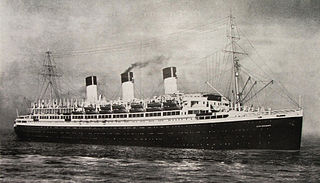 W
WCap Arcona, named after Cape Arkona on the island of Rügen, was a large German ocean liner and the flagship of the Hamburg Südamerikanische Dampfschifffahrts-Gesellschaft. She made her maiden voyage on 29 October 1927, carrying passengers and cargo between Germany and the east coast of South America, and in her time was the largest and quickest ship on the route.
 W
WThe Declaration of Facts was a widely distributed public statement issued by Jehovah's Witnesses during the period of persecution of the group in Nazi Germany. The document asserted the denomination's political neutrality, appealed for the right to publicly preach, and claimed the Witnesses were the victims of a misinformation campaign by other churches. It was prepared by Watch Tower Society president Joseph F. Rutherford and released at a convention in Berlin on June 25, 1933. More than 2.1 million copies of the statement were distributed throughout Germany, with copies also mailed to senior government officials including German Chancellor Adolf Hitler. Its distribution prompted a new wave of persecution against German Witnesses.
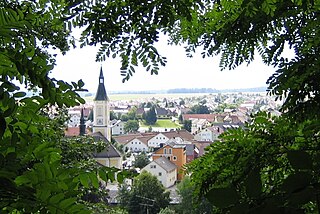 W
WErgoldsbach is a municipality in Bavaria, about 20 km north of Landshut and 80 km northeast of Munich in Germany.
 W
WThe Fabrikaktion is the term for the roundup of the last Jews to be deported from Berlin starting 27 February 1943. Most of these remaining Jews were working at Berlin plants or for the Jewish welfare organization. The term was coined by the victims after World War II, the Gestapo called the plan "Große Fabrik-Aktion". While the plan was not restricted to Berlin, it later became most notable for ensuring the Rosenstrasse protest in Berlin.
 W
WGerman collective guilt refers to the notion of a collective guilt attributed to Germany and its people for perpetrating the Holocaust and other atrocities in World War II.
 W
WThe history of the Jews in Germany goes back at least to the year 321, and continued through the Early Middle Ages and High Middle Ages when Jewish immigrants founded the Ashkenazi Jewish community. The community survived under Charlemagne, but suffered during the Crusades. Accusations of well poisoning during the Black Death (1346–53) led to mass slaughter of German Jews and they fled in large numbers to Poland. The Jewish communities of the cities of Mainz, Speyer and Worms became the center of Jewish life during medieval times. "This was a golden age as area bishops protected the Jews resulting in increased trade and prosperity."
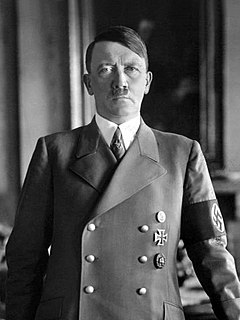 W
WAdolf Hitler was an Austrian-born German politician who was the dictator of Germany from 1933 to 1945. He rose to power as the leader of the Nazi Party, becoming Chancellor in 1933 and then assuming the title of Führer und Reichskanzler in 1934. During his dictatorship, he initiated World War II in Europe by invading Poland on 1 September 1939. He was closely involved in military operations throughout the war and was central to the perpetration of the Holocaust, the genocide of about six million Jews and millions of other victims.
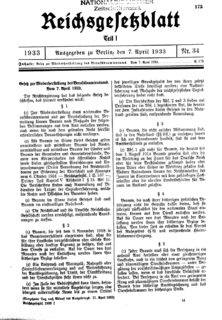 W
WThe Law for the Restoration of the Professional Civil Service, also known as Civil Service Law, Civil Service Restoration Act, and Law to Re-establish the Civil Service, was a law passed by the Nazi regime of Germany on 7 April 1933, two months after Adolf Hitler had attained power. It was one of the first anti-Semitic and racist laws to be passed in the Third Reich.
 W
WThe phrase "life unworthy of life" was a Nazi designation for the segments of the populace which according to the Nazi regime had no right to live. Those individuals were targeted to be euthanized by the state, usually through the compulsion or deception of their caretakers. The term included people with serious medical problems and those considered grossly inferior according to the racial policy of Nazi Germany. This concept formed an important component of the ideology of Nazism and eventually helped lead to the Holocaust. It is similar to but more restrictive than the concept of "Untermensch", subhumans, as not all "subhumans" were considered unworthy of life.
 W
WApproximately 30,000 Jews in Germany and Austria were deported within the region or the country after the Kristallnacht of 9/10 November 1938. They were deported to the concentration camps Buchenwald, Dachau and Sachsenhausen by the NSDAP organizations and the police in the days after the pogrom. This put pressure on the deportees and their relatives in order to speed up the only seemingly voluntary emigration from their homeland and to "Aryanize" Jewish assets. The vast majority of the detainees were released by the beginning of 1939. Around 500 Jews were murdered, committed suicide or died as a result of ill-treatment and refused medical treatment in the concentration camps.
 W
WThe Nathan Israel Department Store was a department store in Berlin. The business was started in 1815 by Nathan Israel as a small second-hand store in the Molkenmarkt. By 1925, it employed over 2,000 people and was a member of the Berlin Stock Exchange, and in the 1930s was one of the largest retail establishments in Europe. Because it was owned by Jews, the store was boycotted by the German government when the Nazi Party came to power in 1933. It was ransacked during the Kristallnacht in 1938 and then handed over to a non-Jewish family by the Nazis. The descendants of the original owners began to receive compensation for their losses after the fall of the Berlin Wall in 1989.
 W
WThe Nazi book burnings were a campaign conducted by the German Student Union to ceremonially burn books in Nazi Germany and Austria in the 1930s. The books targeted for burning were those viewed as being subversive or as representing ideologies opposed to Nazism. These included books written by Jewish, communist, socialist, anarchist, liberal, pacifist, religious, and sexologist authors among others. The first books burned were those of Karl Marx and Karl Kautsky.
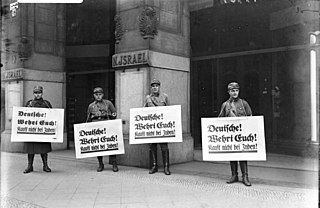 W
WThe Nazi boycott of Jewish businesses in Germany began on April 1, 1933, and was claimed to be a defensive reaction to the Anti-Nazi Boycott, which had been initiated in March 1933. It was largely unsuccessful, as the German population continued to use Jewish businesses, but revealed the intent of the Nazis to undermine the viability of Jews in Germany.
 W
WThe Platz des Unsichtbaren Mahnmals - or in English, the Place of the Invisible Memorial – is a memorial to Jewish cemeteries. It is located in Saarbrücken, capital of the German state of the Saarland. To the visitor, the memorial is completely invisible – it only appears as a sign at the place, reading "Platz des Unsichtbaren Mahnmals".
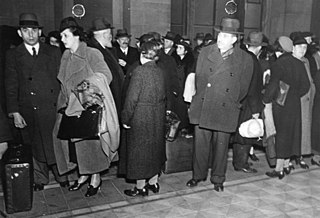 W
WPolenaktion was the arrest and expulsion of about 17,000 Polish Jews living in Nazi Germany in October 1938. These deportations, ordered by SS officer and head of the Gestapo Reinhard Heydrich, displaced thousands of Polish Jews along the Germany–Poland border.
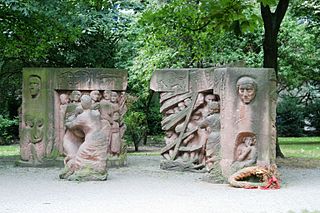 W
WThe Rosenstrasse protest on Rosenstraße in Berlin took place during February and March 1943. This demonstration was initiated and sustained by the non-Jewish wives and relatives of Jewish men and mischling who had been arrested and targeted for deportation, based on the racial policy of Nazi Germany. The protests, which occurred over the course of seven days, continued until the men being held were released. The Rosenstrasse protest is considered to be a significant event in German history as it is the only mass public demonstration by Germans in the Third Reich against the deportation of Jews. In describing the protests, German Foreign Minister Joschka Fischer states, "There were demonstrations, public protests against random arrests, - first dozens, then hundreds, then thousands of women, who demanded in unison "Give us back our men!" This lasted a whole week, in icy weather, in the middle of Berlin in 1943. Finally the protest by the women of the Rosenstrasse, furiously desperate and undeterred by any threats, made the Nazi regime retreat. 1,700 Berlin Jews, whom the Gestapo in their so-called "final action" had herded together into the Jewish community house on Rosenstrasse near Alexanderplatz, were freed."
 W
WSaalgasse is one of the oldest streets in the Altstadt of Frankfurt am Main. It runs parallel to the bank of the Main. From the Middle Ages to the destruction of the city on 22 March 1944, the Saal, together with the more northerly alte Markt and the central Bendergasse, formed one of the three east-west traffic axes of the Old Town.
 W
WThe Schutzstaffel was a major paramilitary organization under Adolf Hitler and the Nazi Party in Nazi Germany, and later throughout German-occupied Europe during World War II. It began with a small guard unit known as the Saal-Schutz made up of party volunteers to provide security for party meetings in Munich. In 1925, Heinrich Himmler joined the unit, which had by then been reformed and given its final name. Under his direction (1929–1945) it grew from a small paramilitary formation during the Weimar Republic to one of the most powerful organizations in Nazi Germany. From the time of the Nazi Party's rise to power until the regime's collapse in 1945, the SS was the foremost agency of security, surveillance, and terror within Germany and German-occupied Europe.
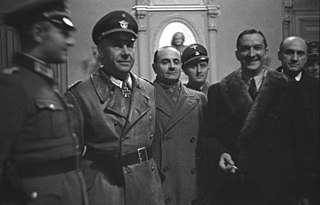 W
WThe Sicherheitspolizei, often abbreviated as SiPo, was a term used in Germany for security police. In the Nazi era, it was used to describe the state political and criminal investigation security agencies. It was made up by the combined forces of the Gestapo and the Kriminalpolizei between 1936 and 1939. As a formal agency, the SiPo was incorporated into the Reich Security Main Office (RSHA) in 1939, but the term continued to be used informally until the end of World War II in Europe.
 W
WA Stolperstein is a sett-size, ten-centimetre (3.9 in) concrete cube bearing a brass plate inscribed with the name and life dates of victims of Nazi extermination or persecution.
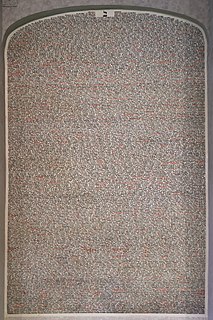 W
WThe Holocaust in the Protectorate of Bohemia and Moravia resulted in the deportation, dispossession, and death of 80,000 Jews. It was carried out by Nazi Germany, which was occupying the country.
 W
WThe Holocaust in East Upper Silesia resulted in the murder of most of the Jews living in East Upper Silesia during World War II. It is best known as the site of Auschwitz concentration camp, but it also hosted many of the forced-labor camps of Organization Schmelt and seventeen ghettos, including Sosnowiec Ghetto, Będzin Ghetto, and Dąbrowa Górnicza Ghetto. Part of the region had been in Poland before World War II and other parts in Germany.
 W
WThe Holocaust in the Sudetenland resulted in the flight, dispossession, deportation and ultimately death of many of the 24,505 Jews living in the Reichsgau Sudetenland, a Nazi German administrative region established from former Czechoslovak territory annexed after the October 1938 Munich Agreement. Due to harassment and violence, including during Kristallnacht, ninety percent of the Jews had already left the Sudetenland by mid-1939. The remaining Jews were subject to property confiscation and eventually deportation. During the later years of the war, tens of thousands of Jews and non-Jews were forced laborers in a network of concentration camps in the Sudetenland.
 W
WThe "White Buses" was an operation undertaken by the Swedish Red Cross and the Danish government in the spring of 1945 to rescue concentration camp inmates in areas under Nazi control and transport them to Sweden, a neutral country. Although the operation was initially targeted at saving citizens of Scandinavian countries, it rapidly expanded to include citizens of other countries. Folke Bernadotte, Count of Wisborg, a Swedish nobleman and diplomat who was then vice-president of the Swedish Red Cross, negotiated the release of about 31,000 prisoners from German concentration camps.